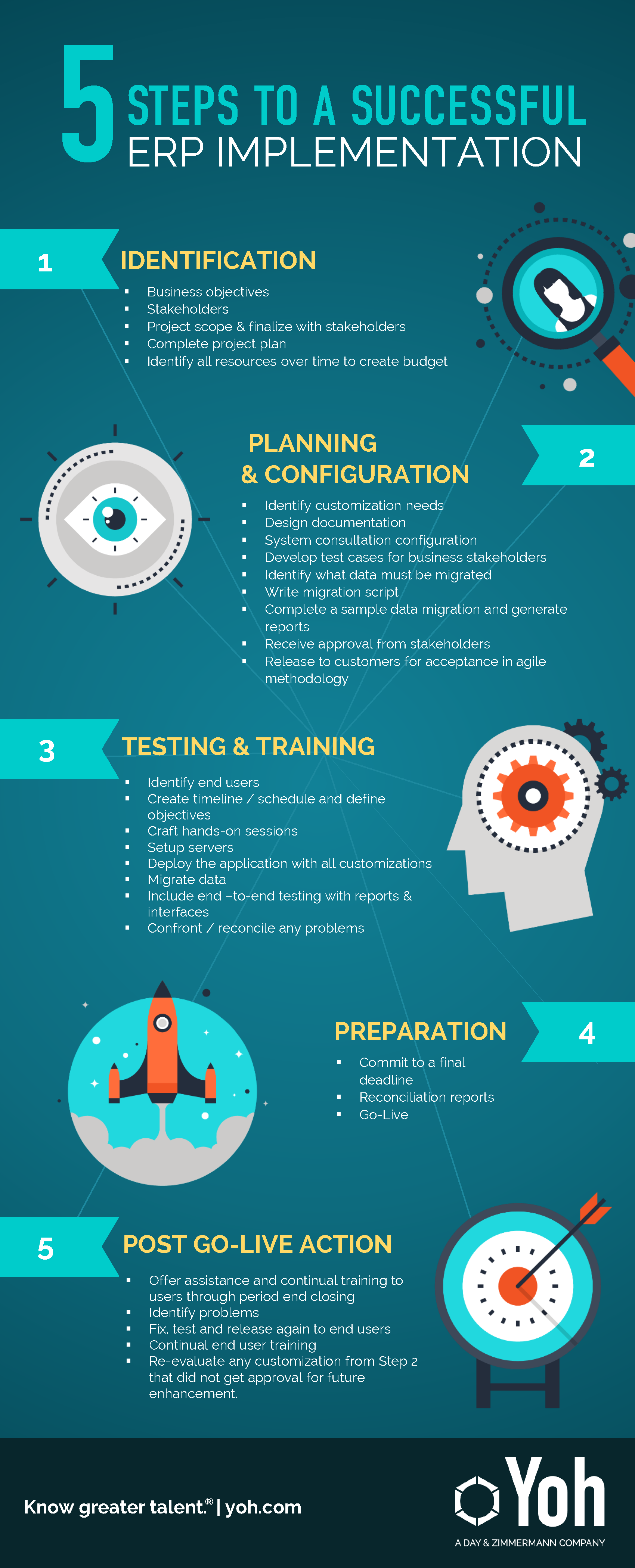 Implementing an Enterprise Resource Planning (ERP) system is a big deal! There are so many moving parts involved in integrating a new software into an organization's core business processes.
Implementing an Enterprise Resource Planning (ERP) system is a big deal! There are so many moving parts involved in integrating a new software into an organization's core business processes.
The level of productivity and prosperity that can come from this piece of tech is almost insurmountable. But, as the saying goes, the things worthwhile usually prove themselves to be the most difficult. There isn’t just one reason that more often than not, implementations prove to be unsuccessful but here is a list of the top most common reasons;
Choice of Software
Choosing the wrong software is far and away the most common mistake made when implementing an ERP system. First and foremost, prior to choosing an ERP software it is imperative to uncover and understand each and every requirement this implementation needs. Ask yourself;
- What are the internal strategic objectives?
- Are there any external requirements?
- Can the entire team come to terms with all requirements?
- How should the requirements be prioritized?
After exhausting a list of every requirement, the search for software may begin. By putting emphasis on the necessary requirements, one will know exactly which questions to ask vendors in order to better understand which software is the best holistic fit for the organization.
Lack of Support from Management
There have been countless times an ERP Implementation goes smoothly but fails because those on the leadership level weren’t onboard. At the end of the day, an ERP implementation is going to affect the majority of the organization’s core business processes. Change is going to happen and change starts at the top. Business leaders must be committed to the training and optimistic for the integration. If they express any sort of disdain or opposition others may follow in their footsteps.
Inadequate Resources
Inadequate resources has earned the spot of Number 3 on the Top Reason ERP Implementations Failed List for a couple of reasons; the first being budget. It is always vital to budget appropriately for any project. However, when dealing with companywide integrations there is much less flexibility. Organizations do not implement entire ERP systems from the ground up often. So when an organization decides to do so, it should be done right. While implementations can get costly, the cost of moving forward with inexperienced resources is far greater. Cutting corners is inevitable at times but should never be considered when choosing the appropriate professionals to carry out an implementation.
Lack of Accountability & Communication
The timeline of the implementation is often at the mercy of these two concepts. This cannot be emphasized enough when considering an ERP implementation. Many critical questions will arise throughout the course of the implementation. Clarity on who is responsible for making those critical decisions will decrease the chances of a stalled timeline and lessen ambiguity. End users will need to be informed that change is on the horizon time and time again. By setting clear responsibilities for each member on the team, you can communicate the same message of change from beginning to end.
Inadequate Training & Testing
User adoption can make or break an implementation. That is why communicating that change is coming is so important, as mentioned in the notion above. Once change is actually occurring, a thorough training must take place for all users. End users must know how to operate the platform, otherwise there will be push back and reluctance to use the software at all, let alone to its greatest potential. Testing shares equal priority with training. Tests should be ran pre and post go-live so all the kinks can be worked out before training is executed.
Legacy Reflection
Oftentimes, organizations will customize their latest ERP system to look and function like its legacy system. While the intention of better user understanding is admirable, this with have negative side effects. This requires a great amount of customization which will complicate your long-term goals. Over-customization will not only be costly but it will also be required with every upgrade in the future. With some ERP systems, introducing 1 to 4 new releases a year, it won’t take long for your organization to fall behind and begin seeking out an ERP upgrade. In addition, over-customization can make the testing process longer and more difficult to execute.
The ERP Implementation failure rate is statistically high. However, it can be avoided if the proper precautions are considered. Ultimately, the system can improve business processes across every department making it an invaluable asset if done correctly. See the 5 Steps To A Successful ERP Implementation to Combat the failure rate,

About the Author: Mitchell Fass is the Executive Vice President, ERP and Enterprise Solutions Cloud practice at Staroint Solutions, A Yoh Company. With more than 30 years of experience with enterprise software, Mitch has helped clients address a range of issues, including enterprise strategy, systems integration, and operations improvement. Mitch received a B.A. in Accounting and Business Administration from Rutgers University.



